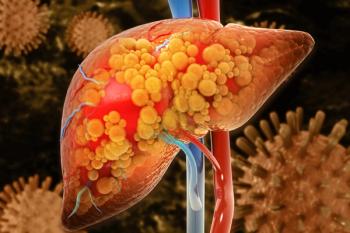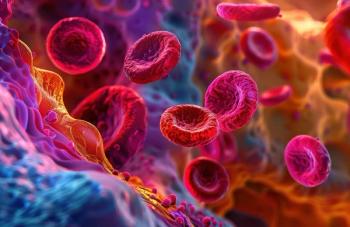
Alopecia Areata Linked to Mental Health, Socioeconomic, Racial Disparities
Key Takeaways
- Alopecia areata significantly impacts mental health and employment, especially in non-White individuals, with higher risks of anxiety and depression.
- Asian and urban populations show the highest lifetime incidence of alopecia areata, with increased primary care utilization and psychological therapy referrals.
Racial and ethnic disparities are found among Asian individuals as they experience the highest lifetime incidence of alopecia areata, and Black individuals face a disproportionately higher risk of anxiety disorders associated with the condition.
Alopecia areata can affect people of all ages, though it's most common in young adults. Aside from limited treatment methods and no known cure for alopecia, diagnosis is often unpredictable, and relapse is common.
Increased risk of mental health conditions is typical among patients with alopecia, with previous research demonstrating a 33% greater risk of new-onset anxiety and a 38% higher risk of depression.2 Almost 80% of people with alopecia report impacts on their quality of life across various measures.3 Data show patients with alopecia areata are 56% more likely to have to take time off work and 82% more likely to be unemployed.2 One study found the estimated incidence of alopecia areata was about 2% in the population studies and almost 2% in hospital-based studies.4
The present study authors “sought to identify any sociodemographic disparities in lifetime incidence, and the wider impacts and health care burden of AA [alopecia areata].”1
Their retrospective observational study collected population-based data that were extracted from the United Kingdom Oxford-Royal College of General Practitioners Research and Surveillance Centre database. Patients were enrolled between January 1, 2009, through December 31, 2018. There were 6961 individuals who developed alopecia areata over the study duration from the 4,052,231 enrollees, with a median age of 35 years. Most were diagnosed during childhood (8.6% aged 12-17 years) and early adulthood (27.5% aged 18-29 years).
Most alopecia areata cases were among individuals aged 30 to 49 years (43.1%), followed by persons older than 50 years (20.8%). At age 80 years, the cumulative lifetime incidence translated to 2.11% (95% CI, 2.06%-2.16%). Additionally, female patients had a slightly higher lifetime incidence of 2.35% (95% CI, 2.28%-2.43%) compared with 1.88% seen for male patients (95% CI, 1.81%-1.94%). However, no difference was identified until after age 50 years.
Participants of Asian ethnicity had the greatest lifetime incidence of 5.87% (95% CI, 5.51%-6.24%) compared with White, Black, and other ethnicities. Individuals living in urban areas (2.27%; 95% CI, 2.21%-2.33%) had higher lifetime incidence than participants who lived in rural regions (1.49%; 95% CI, 1.39%-1.58%).
Depressive episodes, recurrent major depressive disorder, and anxiety disorders were used to match with a control population. Eligible adults and adolescents with alopecia areata incidence (n = 6183) were matched across all 24,718 sociodemographic and clinical characteristics, except for smoking.
Greater risks of depressive episodes (adjusted OR [aOR], 1.35; 95% CI, 1.25-1.46), recurrent major depressive disorder (aOR, 1.45; 95% CI, 1.30-1.51), and anxiety disorders (aOR, 1.40; 95% CI, 1.30-1.51) were linked to alopecia areata. Participants of Black ethnicity had elevated rates of alopecia areata–associated risk of anxiety disorders (aOR, 2.92; 95% CI, 1.71-4.91). Mental health risks linked to alopecia areata were observed in urban areas but not rural regions.
Individuals diagnosed with alopecia areata exhibited significantly higher primary care utilization compared with those without the condition (adjusted incident rate ratio [aIRR], 1.42; 95% CI, 1.37-1.46). This trend was more pronounced among male patients (aIRR, 1.54; 95% CI, 1.46-1.63) than female patients (aIRR, 1.35; 95% CI, 1.30-1.40).
Notably, individuals of Asian ethnicity with alopecia areata demonstrated the highest primary care attendance (aIRR, 1.64; 95% CI, 1.51-1.78), surpassing that of White individuals (aIRR, 1.30; 95% CI, 1.25-1.36). Furthermore, individuals with alopecia areata were more likely to receive referrals for psychological therapy (adjusted HR [aHR], 1.36; 95% CI, 1.17-1.57).
Higher rates of unemployment (aHR, 1.46; 95% CI, 1.14-1.87) and time off from work (aHR, 1.49; 95% CI, 1.38-1.61) were found among those with alopecia areata. Those of Black ethnicity had greater risk of time off work (aHR, 2.54; 95% CI, 1.80-3.56) compared with White ethnicities (aHR, 1.42; 95% CI, 1.28-1.58).
The study findings are limited because individuals with alopecia areata may have higher health care utilization, potentially leading to increased diagnoses of other conditions. Additionally, lack of detailed visit information prevented differentiating alopecia-related visits from those for other reasons. Furthermore, the study may underestimate the true burden of alopecia areata due to its focus on health care encounters and exclusion of individuals not seeking medical attention.
Individuals of Asian ethnicity, those experiencing socioeconomic hardship, and urban residents may face the most severe consequences of alopecia areata. Moreover, preliminary evidence suggests that the psychological and professional repercussions of alopecia areata could be most pronounced in non-White ethnic groups.
“Future research is needed to understand the experiences of patients from minority ethnic groups living with alopecia areata and to inform strategies to optimize clinical care for those most at risk of AA and its consequences,” concluded the study authors.
References
1. Thompson AR, Tziotzios C, Nesnas J, Randall R, Czachorowski M, Messenger AG. Lifetime incidence and healthcare disparities in alopecia areata: a UK population-based cohort study. Br J Dermatol. 2024;191(6);924-935. doi:10.1093/bjd/ljae307
2. Macbeth AE, Holmes S, Harries M, et al. The associated burden of mental health conditions in alopecia areata: a population-based study in UK primary care. Br J Dermatol. 2022;187(1):73-81. doi:10.1111/bjd.21055
3. Toussi A, Barton VR, Le ST, Agbai ON, Kiuru M. Psychosocial and psychiatric comorbidities and health-related quality of life in alopecia areata: a systematic review. J Am Acad Dermatol. 2021;85(1):162-175. doi:10.1016/j.jaad.2020.06.047
4. Villasante Fricke AC, Miteva M. Epidemiology and burden of alopecia areata: a systematic review. Clin Cosmet Investig Dermatol. 2015;8:397-403. doi:10.2147/CCID.S53985
Newsletter
Stay ahead of policy, cost, and value—subscribe to AJMC for expert insights at the intersection of clinical care and health economics.












































